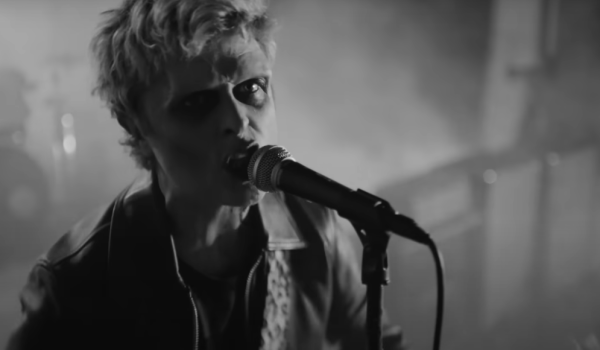The Wire: A Must-See, 20 Years Later
June 2, 2002, the first episode of The Wire aired on HBO. Upon first glance, the show seemed like your typical police procedural, albeit one with much more profanity and diversity than network television would allow. Yet The Wire was anything but a typical cop show, for creator David Simon eschewed the procedural format in favor of a large-scale narrative from the perspective of both the police department and the drug dealers they fought against. Audiences weren’t ready for a show this ambitious, and ignored The Wire in favor of more simplistic television.
Despite the lack of ratings, The Wire would remain on the air for six more years, gradually expanding the scope of its narrative with each subsequent season. By the time the last episode aired in 2008, Simon and his writers had woven a narrative that showcased the pleights of Balitmore’s cops, drug dealers, dock workers, educators, journalists, and politicians. The Wire has since been reevaluated as a monumental achievement in television and is a powerful piece of social commentary that continues to hold relevance nearly two decades later.
The Wire is, to put it simply, about the city of Baltimore. David Simon’s goal in writing this show was to make viewers see institutional dysfunction that plagues the city, and he did so by giving a voice to almost every individual within the show’s narrative. Our main characters include cops like the rebellious Jimmy McNulty, reformer Bunny Colvin, and careerist Cedric Daniels. The inner workings of the drug trade are explored as well, where we observe characters such as the drug kingpin Avon Barksdale, his capitalistic partner Stringer Bell, and their ruthless rival Marlo Stansfield. We also follow politicians involved with local city government, such as the ambitious Tommy Carcetti or the gleefully corrupt Clay Davis. Other characters include the heroin addict Bubbles and charismatic stick-up man Omar Little, as well as dozens of other people spread throughout the city of Baltimore. The Wire showcases the struggles of a wide variety of people, revealing that everyone in Baltimore must contend with their own fundamentally broken institution.
A large part of The Wire’s continued relevance stems from its bleak social commentary, for the writers portray Baltimore as an elaborate tapestry of dysfunction. The issues that plague Baltimore can’t be traced back to one person or even a group of people, but are instead the result from deep seated flaws found within the core of American society. The Baltimore Police Department maintains order through sloppy police work and brute force, which has a devastating effect on the community at large. This kind of systemic dysfunction is not unique to the police force.
Dealers within the Baltimore drug trade must contend with both organizational in-fighting and violence brought on by their younger competitors, and many find it difficult to escape this violent lifestyle. The city government is structured in a way that encourages politicians to engage in deceitful corruption, with most being more concerned with maintaining the status quo than with implementing meaningful change. Even the education system is rife with dysfunction, as the teachers ignore the needs of their students in favor of preparing them for standardized testing, causing many kids to turn their back on academics and drop out.
There are some reformers who try to change the system for the better, but they are ultimately crushed by the institution they are fighting to improve. The Wire shows us time and time again that the American people are afraid of change and would rather maintain the flawed status quo than risk radical restructuring. This message hits especially hard thanks in large part to the show’s brilliant writing and strong characterization; David Simon ensures that every character has a distinct voice.
Few shows can claim to have the scope and intimacy of The Wire; every character on this show feels like a fleshed-out human being. We knew alcoholic cowboy cop Jimmy McNulty just as well as we know the young drug dealer Bodie, allowing us to see the show’s conflict develop from multiple unique perspectives. David Simon’s refusal to adhere to generic notions of good and evil make The Wire even more compelling, for every character is shown to have either a fatal flaw or hidden virtue. Upon first glance Stringer Bell appears to be a pure sociopath, a man who is willing to order murder in cold bold for the sake of his ruthless ambitions. However, Bell was a reformer as well and ultimately proved to be a man trapped between two worlds, neither of which he fully understood. On the flip side there was Omar Little, a charismatic vigilante who stole money from ruthless drug dealers, and refused to turn his gun on anyone removed from the drug trade. Yet Omar also perpetuates the cycle of violence that consumes Baltimore, inspiring numerous acts of barbarity that cost many people their lives. This layer of complexity makes The Wire even more fascinating and adds a strong sense of narrative heft to the show’s timely themes.
The Wire is easily the most important television show ever made and the dictionary definition of a must-see. The show’s themes of the inherent flaws within American society have sadly remained relevant nearly 20 years later, while the nuanced characterization adds another layer of poginat depth to Simon’s social commentary. America’s institutional shortcomings have been put on full display this year, especially in regards to the structural failings of both our police force and government. This makes The Wire even more impactful all these years later, for it forces us to examine this country’s societal decay with unflinching realism. So while The Wire may not be easy viewing, it is most definitely essential.





